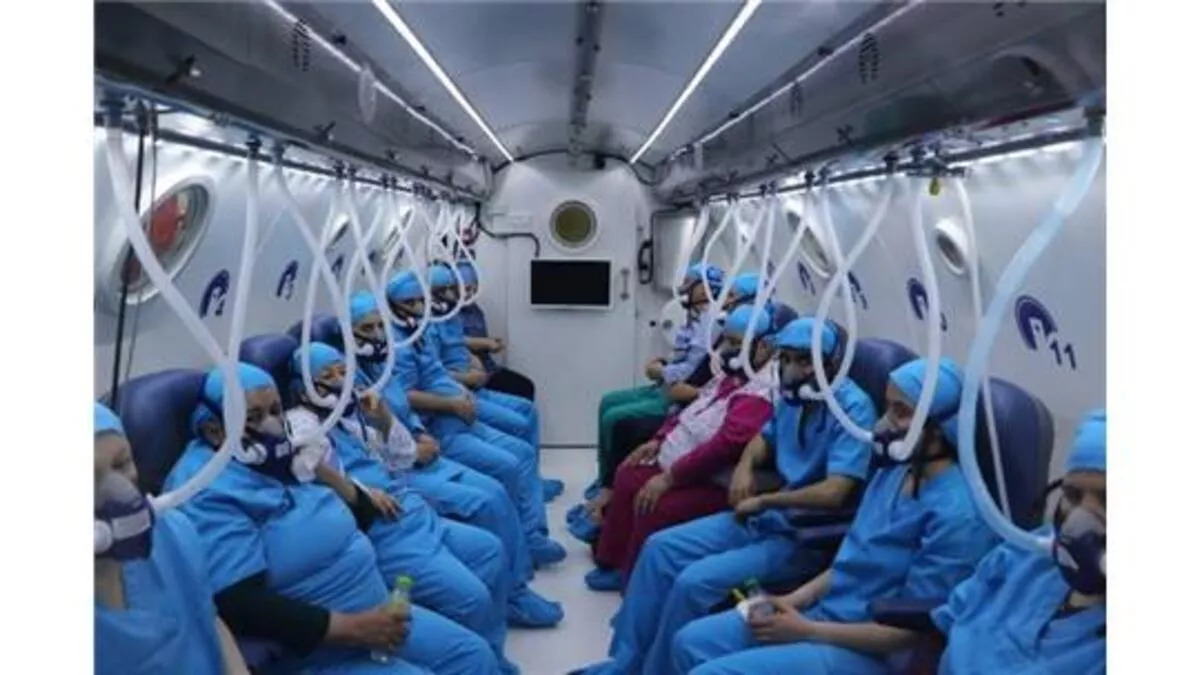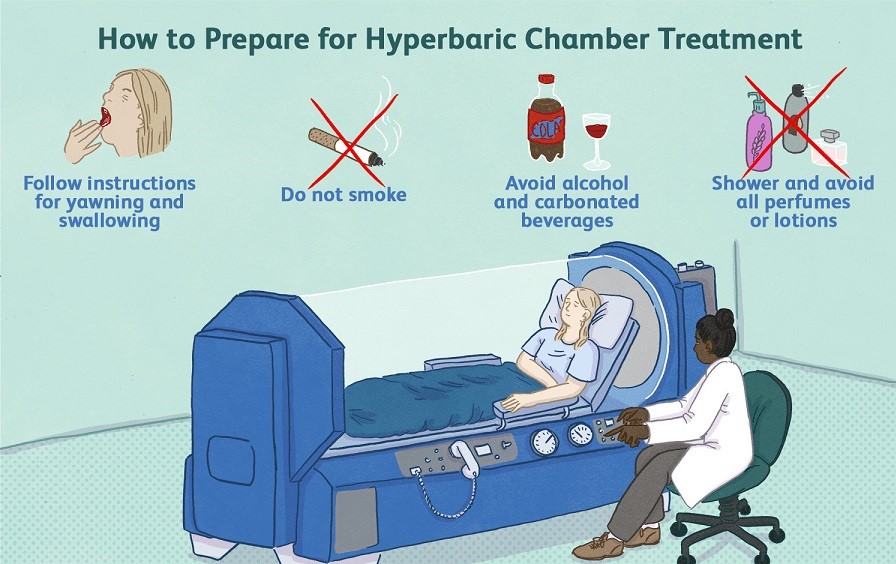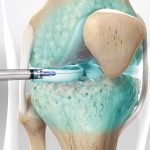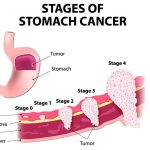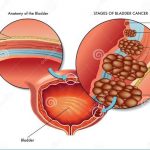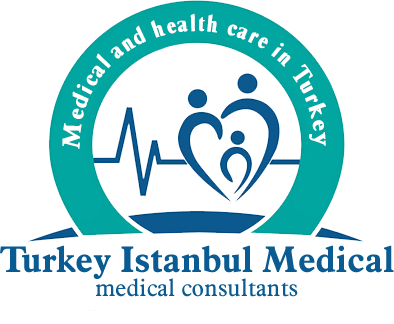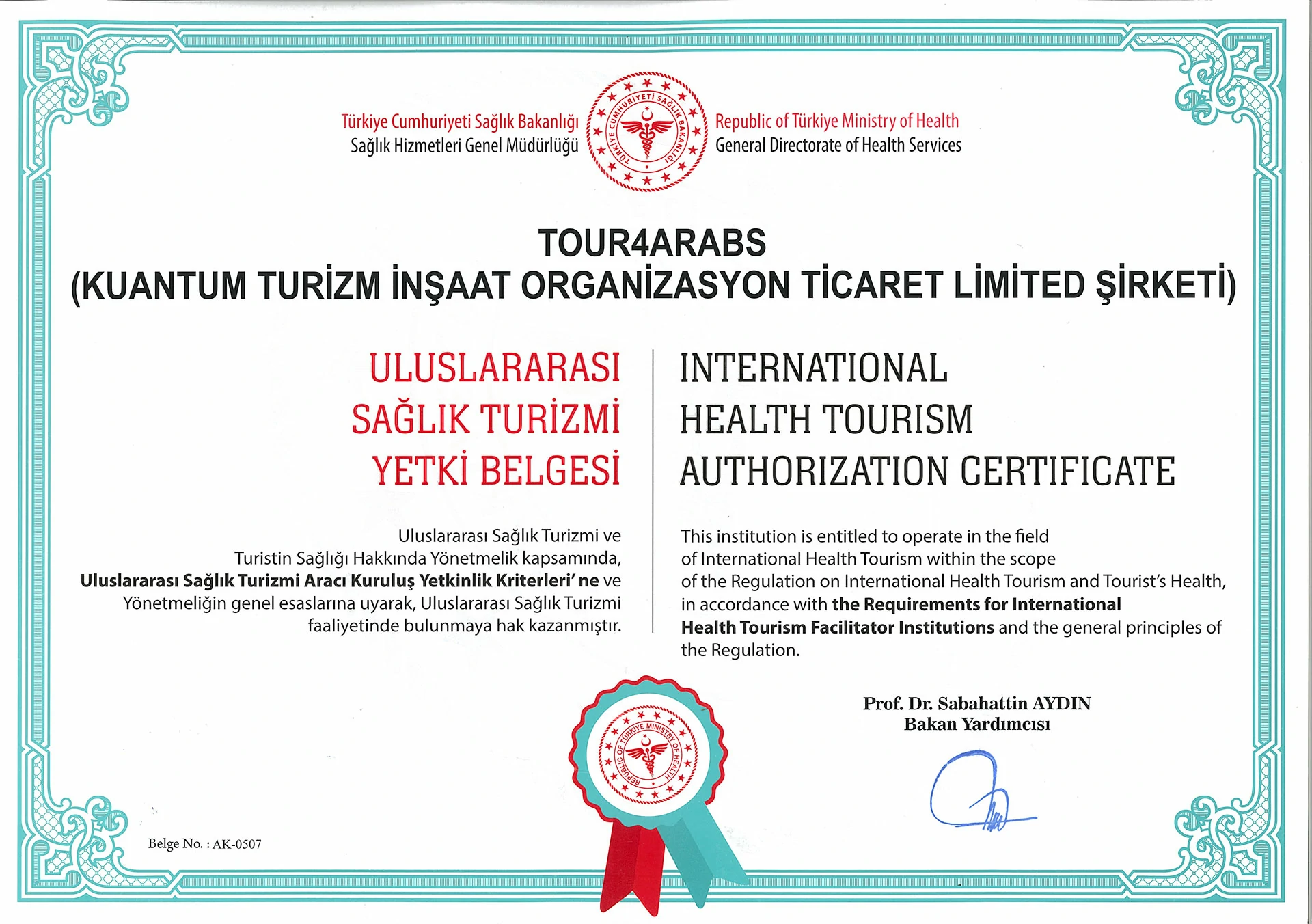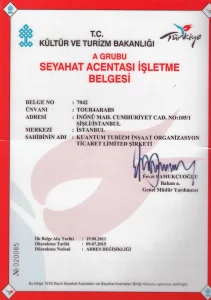What is Hyperbaric Oxygen Therapy? (HBOT)
Hyperbaric oxygen therapy is a method in which 100% oxygen is inhaled by putting the patient in a closed cabin under a pressure higher than 1 ATA, that is, above sea level. It is an evidence-based form of treatment that has been scientifically proven to be effective in many studies. It is applied with a mask, cap or endotracheal tube (tube attached to the trachea) considering the clinical condition and needs of the patient in pressure rooms where one or more people can be present at the same time.
In Which Diseases is Hyperbaric Oxygen Therapy (HBOT) Used?
-
Sudden Hearing Loss:
Hyperbaric oxygen therapy accelerates healing by increasing the oxygen level in the inner ear in patients diagnosed with sudden hearing loss. Patients should start hyperbaric oxygen therapy early. The best results can be obtained in patients who start hyperbaric oxygen therapy within the first 72 hours. According to the needs of the patients, more than one session of treatment can be applied per day.
-
Sudden Vision Loss:
Sudden vision loss is an emergency situation that occurs as a result of occlusion of the vessels feeding the retina layer of the eye. Hyperbaric oxygen therapy can maintain oxygenation even if there is a blockage in the retinal vessels. In patients with sudden vision loss, initiation of treatment as soon as possible ensures a positive progress in the treatment. Therefore, patients should be directed to the nearest hyperbaric treatment center. The number of sessions and frequency of sessions should be planned by Underwater Medicine and Hyperbaric Medicine specialists according to the response of the patients to the treatment.
- Brain Abscess
- Crohn’s Disease
Decompression Treatment, One of the Serious Health Problems That Divers Often Encounter:
The disease occurs in two types:
-
Type 1 Decompression Sickness:
It is a mild decompression with joint pain and some signs on the skin.
-
Type 2 Decompression Sickness:
More serious symptoms occur. It can cause death by affecting the circulatory, respiratory and nervous systems.
-
Gas Gangrene and Other Necrotizing Infections:
Necrotizing infections are infectious diseases that are not seen very often, but that impair quality of life and can be life-threatening. It may develop after surgical procedures or trauma or for no apparent reason.
Patients often have a risk factor such as cancer, diabetes, and immune system disease. In the early period, pain, edema, crackling sound and very foul-smelling discharge can be seen after injury.
The common feature of these infections is hypoxia, that is, oxygen deficiency. When hyperbaric oxygen therapy is applied in addition to medical and surgical treatments, it has been observed that positive developments have been recorded in the course of the disease and the chance of success has increased.
Hyperbaric oxygen therapy increases the oxygen level and creates an unsuitable environment for the growth of bacteria. It also enhances the effect of some antibiotics and supports the body’s immune system functions.
-
Air or Gas Embolism:
Gas embolism is a disease that occurs as a result of the entry of air or another gas into the circulatory system, which can cause mild or severe symptoms depending on the volume of the gas and the area of obstruction. It can occur during surgical procedures or while diving. Asthma, COPD, and some diseases that cause adhesions to the lungs can increase the risk of gas embolism.
The main treatment method in gas embolism is hyperbaric oxygen therapy. After providing the appropriate conditions, the patient should be transferred to the pressure chamber and the treatment should be started without delay. Early treatment increases the success rate.
-
Carbon Monoxide Poisoning:
Carbon monoxide is a colorless, odorless and poisonous gas. Insufficient combustion of carbon-containing materials produces carbon monoxide gas. Stove and geyser poisonings occur due to inhalation of flue gas and exposure to smoke during fire. Depending on the severity of carbon monoxide poisoning, mild symptoms such as nausea, vomiting, fatigue, headache and dizziness may occur, as well as loss of consciousness, cardiac arrest and death.
Carbon monoxide gas binds 200 to 240 times more than oxygen to hemoglobin in the blood, which carries oxygen to the tissues. Many different symptoms occur when hemoglobin cannot carry enough oxygen to the tissues.
The course of the disease varies depending on the duration of exposure to the gas, the carbon monoxide concentration, the time of initiation of treatment and oxygen therapy. Children, the elderly, pregnant women, those with chronic diseases and those who have consumed alcohol are in the higher risk group.
Bone Inflammations (Bone Infection – Bone Tissue Death)
-
Bone Infection:
The partial pressure of oxygen in infected bones is 17-23 mmHg, which is about half that of healthy bones.
Hyperbaric oxygen therapy increases the partial oxygen pressure to 1000-1200 mmHg in bone infections. And it helps to heal the infection. The total number of sessions is determined by the patient’s response to the treatment. In these bone infections, the session duration of hyperbaric oxygen therapy is 90-120 minutes.
-
Bone Tissue Death:
Bone death is a bone disease that occurs with the interruption of blood supply in the bone tissue, reduces the quality of life, and progresses with pain and limitation of movement.
Hyperbaric oxygen therapy reduces edema when applied in the early period. It supports the formation of new blood vessels. And it can contribute to bone restructuring.
During hyperbaric oxygen therapy, the total number of sessions can be determined by monitoring the patients for pain and limitation of movement.
-
Suspected Involvement Skin Flaps and Grafts:
Skin grafts and flaps are one of the most commonly used surgical procedures for the treatment of non-healing and problematic wounds. These surgical procedures are popularly known as “patch surgery”. The chances of success of these procedures may be low in patients with circulatory system disorders, especially vascular occlusion and diabetes.
Low oxygen levels prevent grafts and flaps from healing. Hyperbaric oxygen therapy, which supports circulation and increases the amount of oxygen in the tissues, significantly increases the success rate of grafts and flaps. It is used to prepare the injured area before the procedure and to accelerate the healing after the procedure.
- MS Disease,
It is used in the treatment of circulatory disorders in the tissue that develops after interventions such as hair transplantation and filler injection.
- Diabetes
Thermal Burns
It is tissue damage that develops due to various physical and chemical factors such as electric current, heat and radiation.
Burns are divided into 4 degrees depending on their width and depth:
-
First Degree Burns:
They are superficial burns. It is usually seen in the form of sunburn and hot water burns. Healing is achieved without leaving any traces.
-
Second Degree Burns:
These are deeper burns. It is very painful for the patient. Fluid-filled blisters (bullae) form on the skin. It takes longer to heal and leaves scars on the skin.
-
Third Degree Burns:
All layers of the skin are burned, and the subcutaneous tissue is also affected. Sweat glands and hair follicles are also damaged. The skin loses its elasticity. It takes a long time to heal and leaves large scars.
-
Fourth Degree Burns:
The burn reaches deep-seated organs such as bone tissue.
- Soft Tissue Traumas
Are There Any Side Effects of Hyperbaric Oxygen Therapy (HBOT)?
The most common side effect of this oxygen therapy is the pressure it puts on the sinuses and ears. However, this is not a dangerous situation. Other possible side effects are rare.
These less visible effects can be listed as follows:
-
Claustrophobia:
Most patients do not experience any problems in the pressure chamber. Some patients may take time to get used to it. Few patients hesitate to enter the press room and do not accept treatment. In cases where pressure chamber treatment is of vital importance, treatment is provided by administering some relaxing drugs to the patient.
-
Ear and Sinus Problems:
Some people experience problems due to pressure changes between the ears and sinuses and the external environment. How to solve this problem is taught to patients by trained personnel. Patients inform the helper or outside operator that they experience discomfort during the pressure increase. When necessary, the problem is tried to be solved by stopping or reducing the pressure increase. In some cases, it may be necessary to use medication for easy equalization.
-
Lungs:
In patients who have been treated with HBOT for a very long time, oxygen affects the lungs and may cause some complaints.
Patients may experience various complaints such as burning in the trachea, shortness of breath, dryness, and dry cough. If such symptoms occur, treatment is interrupted. These complaints disappear in a short time after the break.
-
Brain:
Oxygen poisoning in the central nervous system can be seen in HBOT applications where the treatment pressure is high.
This situation is very rare. When central nervous system oxygen poisoning is seen, patients may develop a tinnitus, nausea-vomiting, restlessness, irritability, twitching, numbness, tingling and seizures in advanced stages, especially in the facial muscles.
Oxygen therapy should be interrupted if any of these symptoms occur. When oxygen breathing is interrupted, the patient returns to normal after a short time.
-
Eyes:
Myopia may be seen in patients who receive HBOT for a long time. This situation is temporary, vision returns to normal shortly after treatment is discontinued.
What are The Advantages of Hyperbaric Oxygen Therapy (HBOT)?
Since patients receiving HBOT breathe 100% oxygen, the amount of oxygen carried to the tissues increases, while the amount of dissolved free oxygen in the blood increases, providing a healing effect for tissue damage.
In addition, other advantages of HBOT can be listed as follows:
- The production of substances that provide wound healing increases.
- Provides edema reducing effect.
- Supports cells responsible for body defense.
- It prevents the growth of bacteria that grow in an oxygen-free environment.
- Supports new vessel development.
- Eliminates tissue damage due to air and gas bubbles.
- It reduces the effectiveness of some toxins released by bacteria.
How is Hyperbaric Oxygen Therapy (HBOT) Applied?
Hyperbaric oxygen therapy, to define simply; It is a treatment method applied by breathing pure oxygen, that is, 100% oxygen, to the patient who is taken to a closed pressure room.
During hyperbaric oxygen therapy, patients are taken to cabins called single or multi-person pressure chambers. Pressurized oxygen is supplied to the single cabins and air is supplied to the multi-person cabins, so that the pressure inside is approximately 2-2.5 times the normal atmospheric pressure.
When the pressure in the cabin reaches the desired level, pure oxygen is given to the patients with the help of a mask. Patients can take oxygen while lying down or sitting down. When pure oxygen is given, patients may feel pressure in the ears in the first stage, as in an airplane.
For this reason, this stage is called the dive stage. It is possible to contact the specialists who perform the treatment in the pressure chambers. When the desired pressure level is reached, experts ask patients to wear masks and to breathe the air of the environment at regular intervals in order to prevent the negative effects of taking pure oxygen for a long time. In the last stage of the treatment, the pressure is brought to a normal level and the patient is safely taken out.
What are The Pressure Chambers and Types of Hyperbaric Oxygen Therapy?
Hyperbaric oxygen therapy can be applied in single-person pressure or multi-person pressure rooms that allow patients to breathe oxygen in a pressurized environment.
Our clinic is the newest one among the existing pressure chambers in our country, and it is the only clinic with both single and multi-person pressure chambers.
-
Single Pressure Chambers
- In single-person pressure rooms, the patient can be treated by breathing from the environment by pressurizing the environment with oxygen or by breathing oxygen through a mask after the environment is pressurized with air.
- The most important advantages of single pressure chambers are that they provide patient-specific treatment and isolation, and that there is no obligation to wear a mask when pressurized with oxygen.
- Our single pressure chamber is made of full acrylic, that is, a transparent material resistant to pressure.
-
Multiple Pressure Chambers
- In multi-person pressure rooms; The pressure chamber is pressurized with air, and oxygen is breathed into the patients with a mask or headgear.
- The most important advantages of multi-person pressure chambers are that they can reach higher pressures, that patients who require intensive care and close follow-up can be admitted, and that they have a wider area.
- Our multi-person pressure room is capable of arranging the treatment of ten patients at the same time.
With the sound system mounted on the device, our patients can be followed visually and audibly throughout the entire treatment session.
Our pressure chambers are produced with the latest technology and all components used in their production have been approved by certified organizations. And patient safety, health and comfort are prioritized.
During the treatment process, patients and the system are constantly monitored with automatic sensors. Treatments are carried out safely with camera, audio tracking and warning systems. Regular follow-up and maintenance of our pressure chambers are provided regularly by our relevant technical personnel.
What Should Be Done Before Hyperbaric Oxygen Therapy?
A number of measures can be taken to prevent undesirable situations before the session.
- It is recommended to take a bath before the treatment session, and cosmetic products such as deodorant, perfume and hair spray should not be used after bathing.
- The hyperbaric oxygen room where the session will be held should not be entered with items such as wigs and jewellery.
- Anyone who is planned to undergo hyperbaric oxygen therapy should be examined by an underwater physician and a hyperbaric medicine specialist.
- The current disease and chronic disease status of the patients who are evaluated before treatment is important.
- Patients who are clinically appropriate are asked to check with chest X-ray and if no risk is detected, they are treated.
- If situations that may pose a risk are detected during the treatment, the patient can be consulted to the relevant units or referred for further examination.
How Do Patients Feel During Hyperbaric Oxygen Therapy (HBOT)?
While the air pressure in the pressure chamber increases during hyperbaric oxygen therapy, a feeling of fullness is felt in the ears, similar to landing on an airplane journey. In the meantime, patients can equalize the pressure in the ear with some movements such as swallowing. The patients are informed in detail about how they can easily equalize the middle ear pressure to the external environment pressure.
Is It Possible to Communicate with the Patient During Hyperbaric Oxygen Therapy (HBOT)?
In our hospital, our pressure cabin looks like an airplane cabin, and there are windows where our patients can see from the inside and their relatives can easily see themselves from the outside. Our patients can watch various visuals from the screens available in the cabin throughout the entire treatment session. In addition, in order to follow certain stages, the instructions can be followed audibly with the sound system. During the entire treatment, our patients are followed up by the pressure room operator with an automatic warning system.
